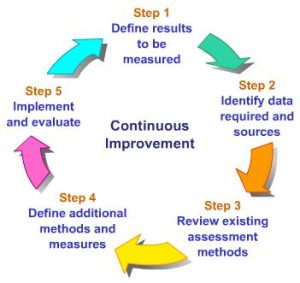A member of the governing body at Shri Ram College of Commerce, University of Delhi, Prof. Madhu Vij is a senior professor of finance, accounting, international finance, risk management, banking and financial services.
 he National Education Policy (NEP) 2020 is a transformative and ambitious policy created by the government that seeks to pave the way for flexible and lifelong learning by the students. NEP is a new and forward-looking vision for India’s Higher Education system that aims to develop and prepare students for meaningful and satisfying lives by recognizing and identifying the unique capabilities of each student and enable economic independence. The NEP policy is not just about the degree – it is based on the pillars of access, equity, quality, affordability, governance, accountability’ and proposes to transform India into a ‘vibrant knowledge hub’.
he National Education Policy (NEP) 2020 is a transformative and ambitious policy created by the government that seeks to pave the way for flexible and lifelong learning by the students. NEP is a new and forward-looking vision for India’s Higher Education system that aims to develop and prepare students for meaningful and satisfying lives by recognizing and identifying the unique capabilities of each student and enable economic independence. The NEP policy is not just about the degree – it is based on the pillars of access, equity, quality, affordability, governance, accountability’ and proposes to transform India into a ‘vibrant knowledge hub’.
Indian Higher Education Institutions (HEIs), under NEP 2020 will be required to focus on the three pillars needed to elevate our institutions to global standards – Industry connect, Internationalization and Interdisciplinary research. NEP has not only enabled Indian HEIs to hire international faculty, open international campuses but also allowed Foreign Universities to set up campuses in India. Going forward, this will help India’s HEIs to increase their perception globally.
The importance of internationalization of higher education in today’s education system cannot be overstated. It helps to improve academic quality and maintain high standards of academic excellence. Educational Institutions and students get exposed to different best practices across the globe which may get adopted over a period of time. This also helps in building strategic partnerships and a stronger global community. The practice of internationalization helps to foster inclusive academic environment as it connects with all the stakeholders in the global environment.
In the present environment, the use of technology is growing rapidly in all sectors. Learning and adapting to the new technology quickly can be quite a challenging job for the students. How to help the students and reskill their future competencies can be tedious. Outcome-based education is an effective education system that is designed to meet these requirements and focuses on developing professionally and socially competent students.
What is Outcome-Based Education (OBE)?
An important area of focus of the NEP 2020 is the Outcome-based education. The education sector worldwide is undergoing a major transformation, with a shift in focus from the traditional mode of classroom teaching to an outcome- based teaching and learning environment. The present system of education predominantly relies on the traditional classroom mode of teaching, which is highly ‘teacher centred’ and usually taught with a fixed curriculum. The OBE has the flexibility to design and alter the curriculum. The core aim behind this approach is to identify the factors that play an important role in improving the competency and knowledge acquisition skills of the students.
The success of OBE is measured by what students can do with what they have learned in the class rather than by the time or effort spent in the classroom. Simply put, OBE is a student centric approach with a focus to develop deeper insights and pursue a career that has an everlasting impact on their excellence and innovation skills. Some of the important principles of OBE are:
- OBE enables students to develop new skills and knowledge and improve the quality of education in higher educational institutions and colleges. This enables to bring clarity among the teacher and students.
- Curriculum/ Course designing – The design of the curriculum in OBE is constantly evolving and aligning with the latest industry demands. There needs to be a constant collaborative effort between industry and academia that will help in designing course content and other learning activities that are aligned with the industry requirements and ultimately help students acquire those skills and meet the needs of the industry.
- High expectation – Students can achieve great things and high performance when we engage deeply with what they are learning. OBE assists students in developing a variety of skills that are designed according to industry demands. This helps to prepare students for the real world and also meet the needs of businesses.
- Expanded opportunities – OBE learning defines what students are expected to demonstrate and attain through their academic journey. Rubrics are used to assess the continuous quality improvements in students eg the improvement in critical thinking skills, writing skills, student engagement and participation in various activities, research skills etc. This makes it incredibly challenging for students as they are provided with expanded opportunities which promotes more successful learning.
What does OBE do?
OBE has been widely adopted by leading institutions across the world. It is a system of education where all aspects of education are focussed on the outcomes of the course. The focus is to make sure students are able to achieve their goals at the end of the course – both in terms of developing skills and gaining knowledge.
- Flexibility in designing the curriculum that is tailored to the needs of the students and the industry. OBE is designed to make sure that the course design and syllabus are constantly kept up to date. This helps to ensure that students always stay relevant with necessary skills and knowledge and are effective and gives students the flexibility and freedom of learning in their ways.
- There is a continuous improvement in the learning of students which assists them in developing a variety of skills to meet the demands of the industry and thereby enhance the quality of education. OBE focuses on what education can do than what they know or what they have learned.
- Academia and Industry collaboration is nothing new, though it has gained more attention and focus under the NEP 2020. OBE is designed to foster effective industry-academic partnership and ensures that students receive an education that addresses the industry demands and is tailored to meet the needs of the industry. The Industry Academia partnership is essential to catalyze innovation and growth in technology. Collaboration between industry and academia is essential for developing research and gives educational institutions assess to more resources to fund the research. These collaborations benefit both parties as they bring distinct perspectives and skill sets to the table and help to bridge the skill gap between the two. Interdependence between the two thus leads to innovation and the requisite synergy.
Difference between Outcome Based Education System vs Traditional Education System
| Outcome Based Education System | Traditional Education System | |
| 1 | Focus is on knowledge and developing new skills. Students are active learners. | Curriculum plays a pivotal role in providing deeper insights regarding different subjects. Students are passive learners. |
| 2 | The performance of students is measured at every step. Assessment is on an ongoing basis. | Student’s performance is measured at the end of the course. Assessment is examination driven |
| 3 | Students have the flexibility and freedom of learning in their ways. Lectures are creative and innovative | Focus is on memorizing and rote learning. Syllabus is rigid. |
| 4 | Student centred form of learning | Teacher centred approach |
| 5 | Defines the outcomes of what a student may achieve in the entire curriculum. | Transmits knowledge and understanding of ideas to students. Emphasis is on what the teacher hopes to achieve. |
| 6 | The focus of the teacher is on developing the skills of the students through their experiences. | A traditional way of teaching where the teacher is lecturing while the students are most of the time listening and learning. |
| 7 | Focus on key competencies students should be able to develop. | Gap between formal education and career-oriented skill set. |
Benefits of OBE for Students
- Students learn the latest technology and skills that businesses are looking for
- Focuses on the real-world relevance of education
- It is a learner-centric approach
- Brings clarity among teachers and students as focus is on the achievement of well-defined objectives
- Reduces learning gap among the students
- Design courses that meet the needs of industries
- Students get the flexibility of learning in the way that is convenient for them
Conclusion
The OBE under NEP 2020 is a progressive model that hopes to transform the traditional education system. It involves the restructuring of curriculum, pedagogy and assessment practices to provide more expanded opportunities for students. The objective under OBE is to set high expectations from students so that they move towards high-order learning. It is a learner-centric approach with a definite focus on the real-world relevance of education. Another innovative dimension of the OBE is the Industry-Academia collaboration which ensures students receive an education that is tailored to meet the needs of the industry. Both parties stand to gain as the industry gets graduates with the necessary skills and knowledge who are industry ready while the academia gets continuous feedback on keeping their courses and teaching methods update. This helps to keep the syllabus aligned with the latest industry demands. Strong industry-academic partnerships will also help in preparing students for employment and ultimately align with the goals of NEP 2020.
- Brings clarity among the teachers and students
- Every student has the flexibility and freedom to learn in their way.
- There is more than one method of learning
- Reduces comparison among the students as everyone has a different target
- Completely involves students taking responsibility for their goals











